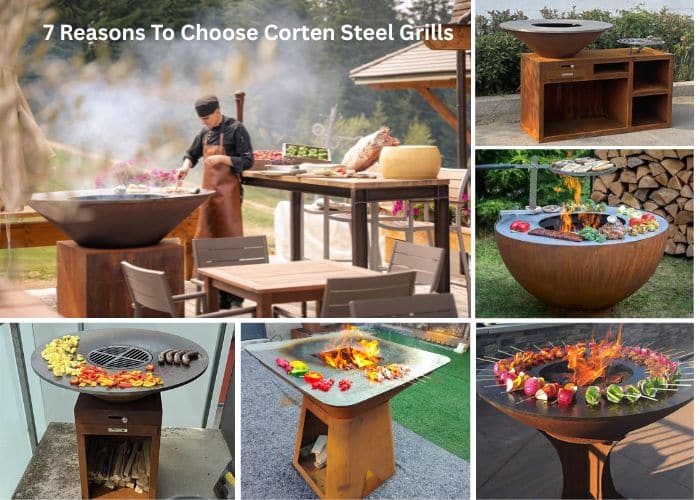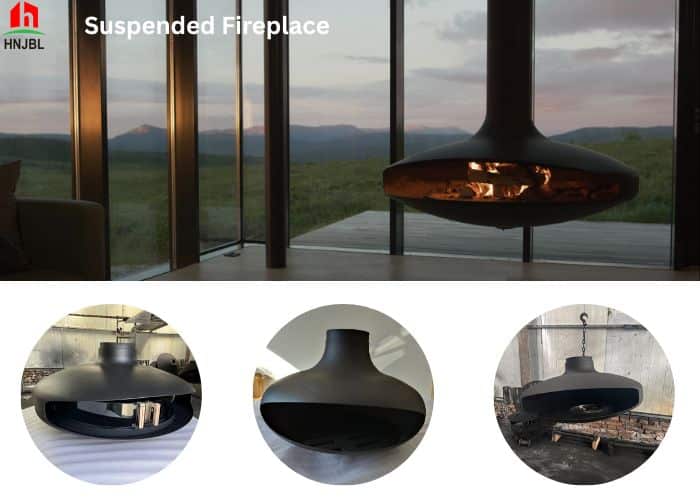
What Is Corten Steel?
Corten steel, also known as weathering steel alloy, is a steel alloy that forms a stable rust layer after exposure to the environment. The “cor” for corrosion and “ten” for tensile strength emphasizes its unique ability to resist corrosion while maintaining structural integrity. Unlike regular steel, which corrodes evenly when exposed to moisture and air, corten steel forms a dense protective oxide layer that prevents further corrosion, making it extremely durable and resistant to harsh environmental conditions. This protective rust layer, also called “patina,” forms naturally as corten steel is exposed to rain, wind, and atmospheric conditions, ultimately giving it a distinctive reddish-brown appearance.
While traditional steel requires periodic painting or coating to prevent rust and corrosion, corten steel greatly reduces the need for repairs and replacements by forming its own protective layer and maintaining structural strength over time. The unique visual effect of corten steel gradually changing color and texture over time has made it popular in modern designs for both functionality and aesthetic value.
How To Make Corten Steel Rust?
The most important thing to make corten steel rust is to expose it to the elements and let it come into contact with air and moisture. The unique thing about weathering steel is that it naturally forms a layer of rust through the oxidation process. This layer of rust not only does not weaken the strength of the steel, but also protects it from further corrosion.
It is important to note that during the rusting process, corten steel does not gradually corrode into powder like ordinary steel. Instead, its rust layer forms a protective barrier to prevent further damage to the steel body. Therefore, under the right conditions, the rusting process of corten steel is not only beautiful, but also has the effect of improving the durability of the steel.
Does Corten Steel Stain Paving?
The reddish-brown rust layer formed by corten steel during the natural rusting process can effectively protect the steel from further corrosion, but if not paid attention to, it may indeed cause pollution to the surrounding road surface or paving materials. Specifically, the rust layer of corten steel may flow off in rain or wet conditions, especially when the newly formed rust layer on the surface of the weathering steel is not stable. Over time, these rust spots may leave marks on the surrounding ground, especially on smooth paved surfaces such as masonry, stone or concrete, forming rust spots that cannot be easily removed.
However, the rusting of weathering steel does not necessarily cause permanent damage to the road surface. Because once the rust layer stabilizes, it will form a strong protective layer, reducing the leakage of further rusting materials. In order to prevent rusting materials from contaminating the road surface, some designers or engineers will take protective measures, such as setting up a barrier between the corten steel and the road surface or using special drainage systems to guide the rust water away.
Is Corten Steel Sustainable?
Corten steel is considered a relatively sustainable material, mainly reflected in its durability and low maintenance requirements. One of the biggest advantages of corten steel is its long-term corrosion resistance. Compared with traditional steel, weathering steel can form a self-healing rust layer during exposure to the natural environment. This rust layer can effectively prevent further corrosion, thereby greatly extending the service life of the steel. This means that the use of weathering steel does not require frequent replacement or repair, reducing the consumption of resources and the generation of waste.
Due to this special corrosion resistance of corten steel, it does not require conventional paint or anti-corrosion coating. This not only reduces the use of paint and chemicals, avoids the pollution that may be caused by coating peeling, but also reduces the energy consumption and resource waste associated with coating maintenance.
In addition, a large amount of recycled materials are used in the production of corten steel. Steel is one of the most commonly used and recycled materials in the world, and the production of corten steel is no exception. A large amount of scrap steel can be used when producing weathering steel, which not only reduces the demand for raw materials, but also reduces carbon emissions in the production process. Therefore, from the perspective of resource utilization, the production of corten steel itself has a certain sustainability.
Can You Paint Corten Steel?
As a professional corten steel manufacturer, we usually provide spraying services to meet the different needs of our customers. Our spraying technology can ensure that the coating is uniform and long-lasting, which can enhance the functionality of weathering steel while meeting aesthetic requirements. Whether it is to meet design requirements or increase the service life of corten steel, we can provide corresponding spraying solutions according to different environmental conditions and customer requirements.
Steps To Paint Corten Steel:
1. Surface cleaning and preparation
Make sure the surface of the corten steel is clean, dust-free, oil-free and rust-free. Any dirt or grease may affect the adhesion of the paint. The surface can be cleaned with a high-pressure water gun, a steel brush or a chemical cleaner. For corten steel that has formed a partial rust layer, loose rust can be removed by light grinding to ensure that the paint can adhere evenly to the steel surface.
2. Grinding or rust removal
For corten steel that already has a certain layer of rust, the surface can be polished with sandpaper or a grinder. It is very important to remove loose rust and oxides, as these residual rust may affect the adhesion of the paint. In addition, grinding the surface can also provide a smoother base for the paint, making the spraying more even. Be careful not to remove too much rust during the grinding process, as moderate rust sometimes helps to enhance the adhesion of the coating.
3. Coating Selection
In order to ensure that the coating can bond well with the surface of the corten steel, it is usually recommended to choose an anti-rust coating with strong adhesion and weather resistance. Common coatings include epoxy resin coatings, polyurethane coatings, etc. These coatings can not only provide good protection, but also visually enhance the effect of weathering steel.
4. Spraying process
When spraying, ensure that the coating covers the entire surface evenly to avoid uneven coating. Using a spray gun or spraying equipment, the coating can be gently sprayed onto the surface of the corten steel. When spraying, maintain an appropriate distance and angle to avoid excessive coating or dripping. One or two coats of paint can be applied as needed, ensuring that each layer of paint is completely dry before spraying the next layer.
5. Drying and curing
After the paint is sprayed, it must be allowed to dry fully. Drying time depends on the type of paint and the ambient temperature. Generally, the paint will dry within a few hours, but to ensure the best effect of the coating, it is recommended to wait at least 24 hours, or even longer, for the paint to fully cure. In some cases, in order to improve the adhesion and durability of the coating, the coating can be baked and cured after it dries.
6. Inspection and repair
After the coating is completely dry, check whether the coating is uniform, whether there are any missing or peeling areas. If problems are found, local repairs can be made and a thin layer of paint can be re-sprayed to ensure the integrity and aesthetics of the coating.
What Is Corten Steel Best Used For?
Corten steel is widely used in many fields due to its unique corrosion resistance and the beautiful effect of natural rust. It has gained wide recognition in landscape design and architecture. One of its best uses is for making flower pots. Corten steel can provide unique visual effects and long-lasting performance.
The corrosion resistance of corten steel makes it an ideal material for outdoor flower pots. The surface of corten steel is naturally rusted to form a strong protective oxide layer. This rust layer can effectively resist the erosion of harsh environmental conditions such as rain, sunlight, wind and sand. Therefore, flower pots made of corten steel can withstand long-term exposure in outdoor environments without being easily damaged, reducing the maintenance requirements of flower pots and providing a long-term and stable use experience.
The design of corten steel flower pots can also be made into different shapes according to needs, such as round, square, rectangular, etc. This flexible design allows corten steel flower pots to adapt to the needs of different spaces and styles, and are widely used in public places such as parks, courtyards, commercial areas, streets, etc. Whether as a separate decoration or as part of a green belt, corten steel flower pots can demonstrate their unique aesthetic and practical value.




